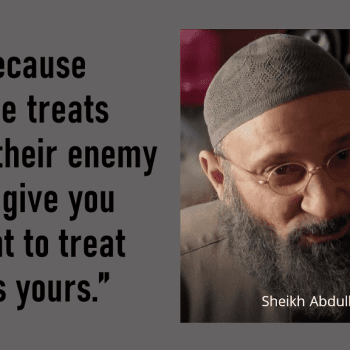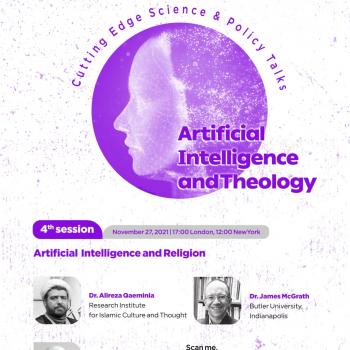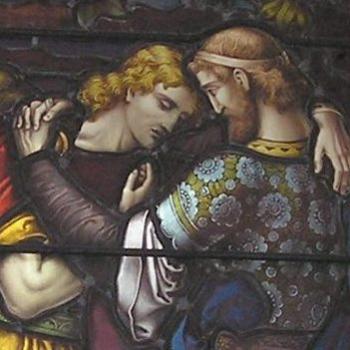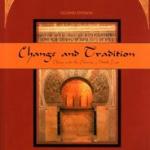This special issue of the International Journal of Islamic Architecture focuses on the spatial forms and urban consequences of forced migration. According to the United Nations High Commissioner for Refugees, the number of displaced persons has reached 70 million, the highest it has been since the end of World War II. The popular term ‘refugee crisis’ itself conceives of the refugee as a problem: an objectified person that is denied active agency and subjected to incarceration in various types of spaces of exception. In addition to such spaces (ranging from those of incarceration to refugee camps), the ‘free’ existence of the refugee in the contemporary metropolis is marked by precarity, a quality that has become a characteristic feature of the neoliberal urban milieu.
It is not only the status, but also the spaces and movements of the refugee that exhibit precarity. The spatiality of forced migration presents a vast field of inquiry as it is possible to identify various spatial forms of refugee experience. The first of these comprises the spaces of mobility: the movement of migrants across borders occurs through particular routes displaying particular forms of spatiality. The ‘Balkan Route’ and the ‘migrant caravans’ of Central America not only transgress national borders but also produce new territorialities. The second spatial form is that of state-controlled incarceration: asylum centres, detention centres, deportation centres, transit camps, prisons, ghettos, etc. The biopolitics of nationless bodies has a spatial character which is based on organized immobility. The third spatial form is the refugee camp, which simultaneously reflects practices of refugee governance, as well as the refugees’ agency in producing the camp as social space. These nomadic spaces curiously have much in common with utopian urbanisms of post-war architectural avant-garde. Thus, even in their precarious conditions they have inspired artists and architects to imagine alternate spatialities. It is also worth considering the non-urban character of camps; the ‘host’ states are often unwilling to integrate refugees into their urban networks and prefer to locate them in undeveloped border areas. Thus, the refugee camps present socially as well as physically marginal conditions. Here, it should also be noted that states engage in open or covert cooperation in governing refugee mobility, for instance in the striking example of the so-called ‘PNG solution’ between Australia and Papua New Guinea where the former has built detention facilities within the latter’s territory. The fourth spatial form is the city, or rather the new urban condition under the multi-dimensional effects of forced migration. Indeed, the displaced subjectivity of urban refugees blending in as a hidden population should be considered as the symptom of the segregation, discrimination, and other forms of inequality inherent in the contemporary metropolis.
It is also crucial to consider the historical circumstances that triggered the current wave of forced migration. The recent episodes of war and destruction are closely related to the crisis of neoliberalism, the effects of which include the destruction of public space, gentrification, the emergence of gated communities, and increases in inequality in the urban sphere. These predicaments of neoliberalization led to the global wave of mass protests in 2011–2013. These protests were responses to the impoverishment of life and took the form of Occupy movements in the Global North and were called the ‘Arab Spring’ by observers of dynamics in the Middle East and North Africa. In broad terms, these were globally connected and mutually inspired revolts against commodification and authoritarianism. There is a curious link between the figure of the refugee and the urban focus of these earlier protests. The refugee represents a generalized condition of the urban politics that marked the protests. The refugee as nomad seeks and produces new spatialities – ambiguous architectures of precarity – and in this respect s/he opens room for considering alternative urban experiences, possibilities of reimagining the city as commons.
Therefore, the refugee does indeed represent a crisis. S/he problematizes the status quo within and across borders established on the primacy of the nation-state and its regimes of governance, including the very definition of citizenship. Within this framework, the knowledge of space produced within disciplines such as geography, urban planning, and architecture is deployed to limit the movements of forced migrants across and within national borders. In response, critical scholarship also scrutinizes the sites, practices, and processes of refugee governance. Terms such as ‘hospitality,’ ‘alien,’ ‘host,’ ‘stranger,’ and ‘destination’ assume new meanings as indexes of the precarious status of the refugee.
The theme of this special issue is particularly in tune with the general scope of IJIA in two respects. The first relates to the geographies of refugee mobility and its major overlap with the transnational geography of Islam across the globe. In most cases, the recent refugee groups arriving in Europe (as well as the United States) are Muslim (or labelled so) and are met with Islamophobic hostility. The second concerns attention to design and the objective to develop dialogue between practitioners and scholars. The ethical dimension of forced migration has led practitioners to develop proposals as alternatives to refugee camps and the interaction between these works and the critical scholarship on forced migration is vital for further advance of both.
This special issue invites papers that address the spatiality of the refugee. The theme is identified as ‘dis-placed’ to underline the dialectics of refugee existence. The refugee is, by definition, displaced; but s/he is also placed in two senses. S/he finds a place to settle but is also subject to the resettlement project of power. Within this framework, topics and related issues that may be addressed include, but are not limited to, the following:
1. Social and cultural aspects
criminal justice and migration control
encounters with institutional and everyday xenophobia (and Islamophobia)
the use of art in the rehabilitation of refugee communities
ethnicity, religion, and the politics of ‘integration’
2. Spatial practices
Continuities/ ruptures of everyday practices between locations of departure and arrival
spatial meanings/ makings of ‘safety’/ ‘privacy’/ ‘normalcy’
the everyday spatial practices of urban refugees
mapping extended and recurrent displacement (methodologies ranging from cartography to digital humanities)
spatial narratives of refugee literature and art
3. Urbanism
crimes against and criminalization of refugees in urban space
border as territory: (un)integration of refugee camps to urban networks
internal displacement (IDPs)
spatial economies of destitution and aid
4. Design and construction
mobile architectures/ temporary dwellings
resilience in/of refugee camps
precarious spaces of refugee subjectivity
Articles offering historical and theoretical analysis (DiT papers) should be between 6000 and 8000 words, and those on design and practice (DiP papers) between 3000 and 4000 words. Practitioners are welcome to contribute insofar as they address the critical framework of the journal. Urbanists, art historians, anthropologists, geographers, political scientists, sociologists, and historians are also welcome. Please send a title and a 400-word abstract to the guest editor, Bülent Batuman, Bilkent University ([email protected]), by 30 July 2019. Authors of accepted proposals will be contacted soon thereafter and will be requested to submit full papers by 31 January 2020. All papers will be subject to blind peer review. For author instructions, please consult: www.intellectbooks.com/ijia













